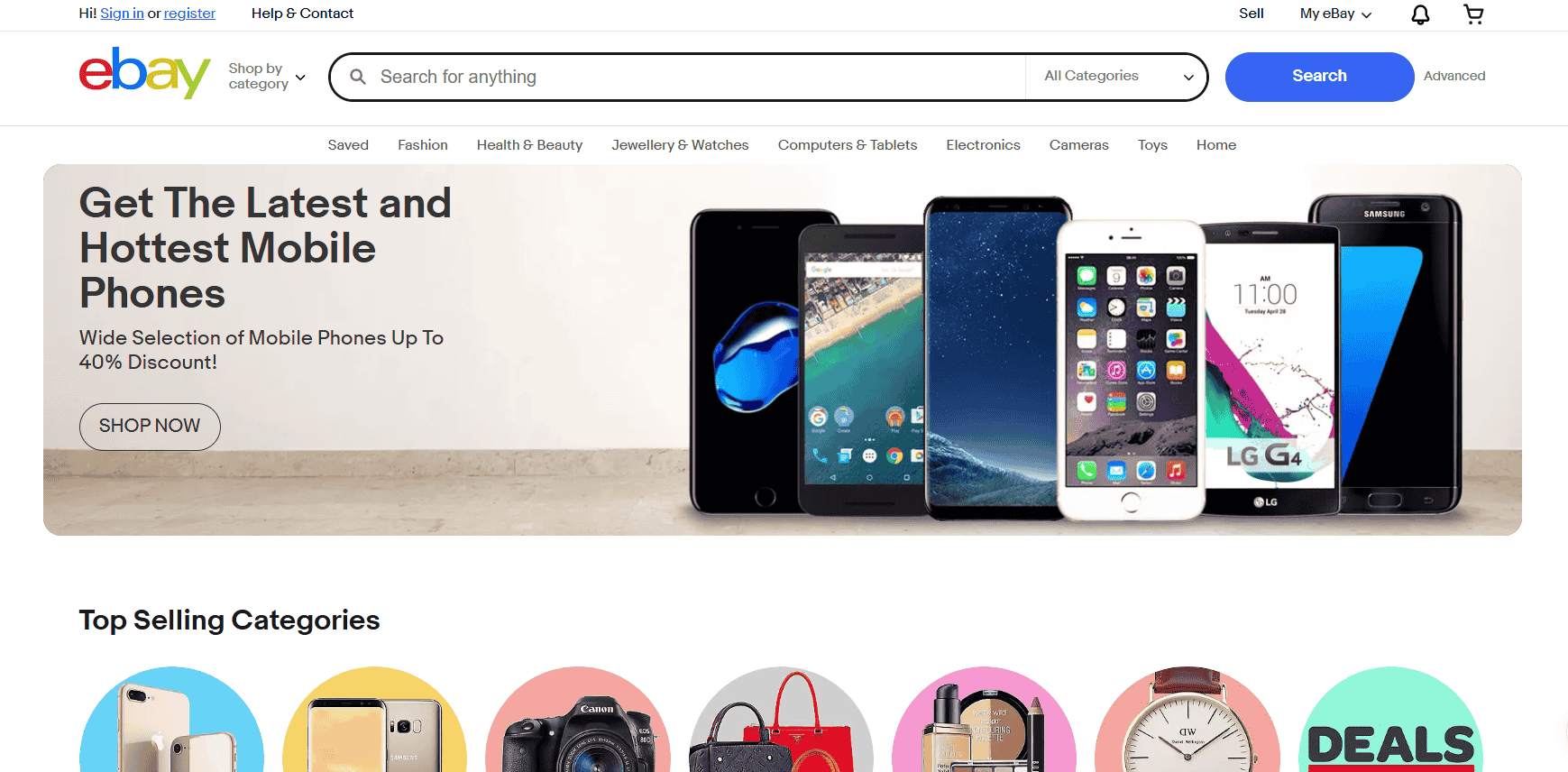Running an online store can feel like a constant balancing act—juggling growth, customer expectations, and ever-changing tech demands. But what makes it harder is when your ecommerce platform becomes part of the problem.
You try to make simple improvements, like speeding up checkout or adding new features, and suddenly you’re buried in limitations you didn’t see coming. The very tools meant to drive your success end up holding you back.
Composable commerce flips that experience on its head. Instead of trying to force your business into the confines of an all-in-one system, this approach gives you the freedom to build your ecommerce stack your way.
-
Composable commerce lets you build your online store using flexible, interchangeable tools instead of relying on one rigid platform.
-
You can upgrade or replace specific parts of your tech stack, like search or checkout, without rebuilding your entire site.
-
MACH architecture (Microservices, API-first, Cloud-native, Headless) gives your store the speed and flexibility to scale and adapt.
-
Big brands like LEGO and Reebok use composable setups to deliver faster, smarter, and more personalized shopping experiences.
-
For growing sellers, composable commerce is a smart way to future-proof your business and stay competitive in a fast-changing market.
You can choose best-in-class tools for everything from search to fulfillment and connect them through APIs to form a fully tailored setup. The result is a system that adapts as your business grows, not the other way around.
What Is Composable Commerce?
Composable commerce is a flexible approach to building ecommerce experiences using a combination of modular, interchangeable tools that are connected via APIs. It’s the opposite of being stuck with a rigid, all-in-one platform.
Instead of being locked into a one-size-fits-all platform, you can choose best-in-class solutions for different parts of your business, like checkout, product search, CMS, payment processing, and more, and integrate them into a cohesive ecosystem.
This gives you real control over how your business runs. Let’s say your store’s current search function doesn’t return relevant results and customers are dropping off. With composable commerce, you can simply replace the search component without touching the rest of your site.
The same goes for switching to a better payment gateway or adding a more robust product information management (PIM) system. You’re no longer relying on one provider for everything. You’re curating your own stack, piece by piece.
Think of it like Lego blocks for your online store. You get to build and rebuild your tech stack using whatever blocks fit your current needs and goals. You can move faster, experiment with less risk, and respond to new demands without tearing everything down.
At the core of composable commerce is the MACH architecture: Microservices, API-first, Cloud-native, and Headless. Each element gives your business greater flexibility and adaptability.
Microservices handle specific tasks independently, APIs let everything communicate smoothly, cloud-native tools keep performance high and scalable, and headless architecture separates the frontend from the backend so you can design experiences exactly how you want them.
Put all that together, and you’re looking at a future-proof ecommerce setup built for constant evolution.
Why Composable Commerce Matters to Online Sellers
As someone who’s worked with ecommerce sellers across different stages, from scrappy startups to fast-scaling DTC brands, I’ve seen the same issues repeat. A business outgrows its platform, can’t innovate fast enough, and ends up spending thousands trying to retrofit new features into an outdated backend.
One client I worked with had a growing catalog and wanted to roll out advanced product filters. Their platform didn’t support it without a complete overhaul, so they were forced into expensive workarounds that still didn’t deliver the user experience they needed.
Composable commerce fixes that. With this model, you’re no longer limited by a rigid all-in-one system. You can build a stack that reflects how you actually run your business, and adjust it as those needs change.
Personalize customer journeys across web, mobile, and even IoT devices
You can deliver consistent and context-aware experiences across multiple channels. Whether your customer is browsing on a phone, interacting with a voice assistant, or shopping in-store, your tech stack supports the same seamless flow.
Swap out underperforming tools without disrupting your entire business
Say your email marketing software stops pulling its weight. You can replace it without worrying about breaking your site or waiting months for a developer to write a custom bridge.
Scale efficiently as your traffic and order volume grow
As your store grows, your tech stack grows with it. Need to upgrade your search function or add more advanced shipping logic? No need to start from scratch. Just plug in a better solution.
According to Gartner, companies that adopt composable commerce will outpace their competition by 80% in the speed of new feature implementation by 2023. That kind of agility isn’t a luxury. It’s survival. Customers expect fast, intuitive, and personalized shopping experiences.
If you can’t deliver, they’ll find someone who can. Composable commerce gives you the agility to meet those expectations without burning through your resources or waiting months to adapt.

Examples of Composable Commerce
Big brands are already showing what’s possible. Take LEGO, for instance. They moved to a headless, API-first infrastructure to speed up content delivery and reduce friction during checkout. The result includes faster load times and a more seamless customer experience across global markets.
For a company with millions of global users, shaving even a few seconds off load time can directly impact sales and loyalty. And in LEGO’s case, it did, especially during high-traffic events like holiday releases.
Reebok also transitioned to a composable stack to support omnichannel selling and flexible content management. They wanted to create consistent brand messaging whether a customer was browsing on their phone, desktop, or visiting a physical store.
With a composable setup, their teams could roll out localized campaigns, sync inventory in real time, and respond more quickly to seasonal trends.
And one of my own clients, a mid-sized fashion retailer in California, improved their conversion rate by 19% within four months of adopting a composable architecture. They were struggling with high bounce rates due to slow and irrelevant search results.
We replaced their outdated search function with a more intelligent, AI-driven search engine that adapted to customer behavior. It helped users find what they were looking for and recommended products based on browsing history, purchase intent, and seasonal trends.
Bounce rates dropped, and average order values climbed. Even better, their in-house team was able to tweak and refine the search rules without having to call in a developer every time.
These examples show how composable commerce helps businesses respond faster, serve customers better, and adapt to the pace of modern retail, whether you’re a global giant or a growing DTC brand.
Dos and Don’ts When Adopting Composable Commerce
If you’re thinking of shifting to composable commerce, it’s important to be strategic. The flexibility is exciting, but it can also be overwhelming if you dive in without a clear plan.
From my experience guiding clients through this transformation, the smoothest rollouts always follow a phased approach, one step at a time, anchored to real business needs.
Do:
Start with one pain point, like your slow checkout or clunky product catalog, and rebuild that component first. Begin where the frustration is highest.
One of my clients had a checkout process that was causing serious cart abandonment. Instead of overhauling the entire site, we focused on fixing that one issue with a modular checkout tool. Within weeks, their completion rate improved.
Work with vendors that have strong API documentation and proven integrations
Strong APIs make or break a composable setup.
You’ll want tools that can talk to each other reliably and scale with your operations. Good documentation also helps your dev team move faster and avoid compatibility issues down the line.
Align your tech roadmap with clear business goals. Technology should support your growth strategy, not lead it.
If your goal is to expand into new markets, for example, then internationalization, currency conversion, and localized search should be part of your composable priorities. Every new tool you plug in should solve a business problem you’ve actually identified.
Don’t:
Do not attempt a full system overhaul in one go. It’s a recipe for chaos. Trying to rewire your entire ecommerce stack overnight will cause more disruption than progress. It’s better to rebuild in stages, validate along the way, and give your team time to adapt.
Do not underestimate the learning curve for your team. Training is crucial. Your tools might be flexible, but your people need to understand how to use them.
I’ve seen stores invest in powerful solutions that sat idle because no one felt confident making changes. Allocate time for hands-on training, even if it slows you down upfront.
Do not choose tools just because they’re trendy. Make sure they truly fit your needs. Buzzwords can be distracting. What works for a billion-dollar retailer might not make sense for your store.
Focus on what’s going to streamline your operations, improve customer experience, or give you measurable ROI, not what’s making headlines.

Is Composable Commerce Worth It?
That depends on where you are in your business journey. For newer online sellers, composable commerce might feel like overkill. The setup and integration can be complex without the right technical support.
You might be better off sticking with a more straightforward all-in-one platform until you’re ready to customize deeper. But once your store starts scaling, especially if you’re adding sales channels, SKUs, or regions, you’ll quickly notice where your current setup starts to crack.
For mid-sized to enterprise-level sellers looking to scale, it’s one of the smartest investments you can make. I’ve worked with clients who hit that inflection point where growth demands more control.
They needed to optimize fulfillment, integrate advanced search, automate content updates, and support multiple storefronts, all without rebuilding everything from scratch. Composable commerce made that possible.
While the initial investment may feel steep, especially when hiring developers or integrating APIs, the long-term savings, speed, and flexibility can pay off quickly.
It’s not just about cost efficiency. It’s about giving your team room to move fast, pivot smart, and build experiences that actually convert.
The Future of Composable Commerce
The momentum behind this model is only growing. More businesses are realizing that agility and customization aren’t luxuries. They’re how you survive in an unpredictable market. No-code and low-code platforms are making it easier for non-developers to manage and update components.
That means your marketing team can launch a new promotion or tweak the homepage layout without waiting weeks for dev support. It shortens the feedback loop and speeds up experimentation.
AI is being embedded into modular tools, from recommendation engines to personalized email triggers. These are both nice-to-have and essential features. Customers expect smart suggestions, real-time updates, and interactions that feel personal.
Composable commerce gives you the foundation to plug in those AI-driven tools and start delivering those experiences right away. I’ve seen brands automate entire flows, from product recommendations based on browsing history to inventory-based upsells, just by connecting the right services.
And as the demand for unified customer experiences grows, composable commerce is paving the way for more connected, intelligent systems.
Whether someone shops on their phone, visits your store, or interacts through a smart home device, they expect everything to sync. This is pushing more sellers to rethink their architecture and move toward systems that can adapt fast and scale across every touchpoint.
This architecture is already spilling into B2B, subscription commerce, and even retail environments where sellers want to offer a seamless digital-to-physical journey. I’ve seen it in action with a client running a hybrid model, online and in-store.
By using composable commerce, they were able to sync loyalty data, order history, and personalized offers across all customer interactions. That kind of consistency builds trust, and trust drives repeat sales.
The future is leaning heavily toward experiences that feel effortless. Composable commerce makes those experiences possible.
So, Should You Go Composable?
If you’re serious about long-term growth, you should at least consider it. I’ve worked with sellers who thought they had hit their ceiling until they realized the real problem wasn’t their product or their marketing. It was the tech underneath.
Once they shifted to composable commerce, they could move faster, launch ideas without friction, and finally build the kind of experience their customers were asking for.
I’ve seen firsthand how composable commerce unlocks creativity, boosts performance, and helps online sellers keep pace in an industry that’s constantly changing.

You don’t have to be Amazon to benefit from agility, personalization, and scalability. You just have to be smart about how you build. That might mean starting small, swapping in a headless CMS or a smarter product search, and growing from there. The payoff comes when your store becomes something you can evolve, not rebuild.
In my opinion, composable commerce is not some fleeting trend. It’s a mindset shift, a way of thinking about your store not as a platform, but as a living system you can adapt piece by piece. It’s how you stop reacting to problems and start designing solutions that actually stick.
And in an ecommerce world where change is the only constant, being adaptable is the closest thing to a superpower. It’s how you stay relevant, profitable, and ready for whatever comes next.







